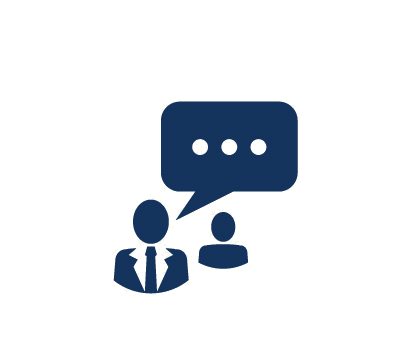Duration: 5 Days
In this course, you'll gain an understanding of Cisco's Unified Contact Center Express (Unified CCX) product and all of its associated client applications and scripting tools. You will learn about all of the Unified CCX components, servers, deployment options, and clients. You will learn how to perform capacity planning, choose the correct product features, and install the product.
Our instructors place major emphasis on the Unified CCX script editing tool, Unified CCX Editor, which allows administrators to script the contact center's caller experience through the system, including queries, recordings, menu input, digit string input, and database operations. You will cover the Cisco Agent Desktop, Cisco Supervisor Desktop, and Cisco Desktop Administrator to optimize the call agent's desktop display and options, supervisor optimization of the call center, and reporting options and customizations. You will explore Automatic Speech Recognition (ASR) and Text-to-Speech (TTS) technologies, and you'll examine options for troubleshooting, reporting, and maintaining the system.
What You Will Learn
- Planning and deploying a Cisco Unified CCX system
- Telephony and media configuration for deployment with CUCM
- Scripting techniques and best practices
- Scripting operations including greeting, prompt and collect, caller input, database queries, and logic
- Time-of-day and holiday operations
- Queue management and best practices for queuing
- Cisco Agent Desktop, Cisco Supervisor Desktop, and Cisco Desktop Administrator
- Cisco IP Phone Agent
- Session Management
- Historical and real-time reporting
- Remote Monitoring
- Outbound preview dialing
- TTS and ASR
- Real-Time Monitoring
- Disaster recovery
Audience
- Systems integrators who deploy Cisco Unified CCX
- System engineers, architects, and support staff who:
- Maintain and configure supervisor and agent desktops
- Write scripts and maintain script integrity
- Require a fundamental understanding of the issues and solutions related to implementation
- Maintain the server system and telephony system for the contact center
Prerequistes
- Working knowledge of fundamental terms and concepts of computer networking, including LANs, WANs, and IP switching and routing
- Basic knowledge of CUCM
- Basic knowledge of contact center operations
- Familiarity with Microsoft desktop applications and SQL database operations
Course Outline
1. Cisco Unified CCX
- Relationship between the Unified CCX platform and the three products it supports
- Three Cisco products supported by the Unified CCX engine platform
- Unified CCX hardware and software components to include all server types, standby deployments, and scalability
- New and improved functions of the three Unified CCX products to include Unified CCX v9.0
2. Designing and Ordering
- Properly size the Unified CCX products by using calculators provided by Cisco
- Properly order Unified CCX products using the Unified CCX configuration and ordering tool
- Network considerations surrounding a Unified CCX deployment
- Using the Solution Reference Network Design for Cisco Unified CCX and Cisco Unified IP IVR and other documents to support a Unified CCX design and deployment
3. Installation and Configuration
- Installing Unified CCX software on all servers in a cluster
- Activating and configuring all components in a CCX cluster
- Configuring and testing a simple CCX Script Application
- Troubleshooting installations using log files
4. Unified CCX Editor
- Navigate the Unified CCX Editor functionality
- Creating, deleting, and editing variables
- Saving and uploading valid scripts to the repository
- Performing the debug process to test a script
- Troubleshooting an application and script using trace files
5. Basic Unified CCX Editor Steps
- Creating a simple script workflow to answer a call
- Adding comments to identify and explain the script and subsequent groups of steps
- Playing voice prompts to share information or instructions with callers
- Terminating and ending a call
- Validate, save as, upload, refresh, and debug a script
6. Caller and System Inputs
- Collecting information from a caller by presenting a list of choices using the menu step
- Collecting digits from a caller by using the Get Digit String step
- Getting information from the system to alter the logic of the call flow
- Validate, save as, upload, refresh, and debug the script
7. Database Access
- Connecting to a database
- Reading and getting information from the database by creating a SQL query within a script step
- Referencing database locations
- Writing information to a SQL database
- Closing the database connection and terminating database resources
8. Logical Operations
- Applying Boolean logic in scripts
- Creating and modifying counters
- Creating and managing timing loops
- Redirecting script logic based on the evaluation of "If" statements
- Using call subflows as reusable scripts
- Creating specialized prompts
9. Caller Transfers
- Creating day-of-week (e.g., weekend) and time-of-day (e.g., out of hours) ranges for different handling
- Transferring calls to various extensions as a function of day and time
- Getting information associated with a call
- Designating calls as completed for reporting
- Determining if the caller has hung up
- Determining if today is a holiday
10. Configuring Unified CCX
- Cisco Unified CCX product, features, and capabilities
- Configuring Unified CCX on the CUCM and CCX server
11. Desktop Product Suite
- Installing Unified CCX Plug-ins to include the Cisco Agent Desktop and Cisco Supervisor Desktop
- Testing the Cisco Agent Desktop and Cisco Supervisor Desktop configurations
- Configuring the IP Phone Agent
12. Unified CCX Script Techniques
- Defining and using Unified CCX Editor Unified CCX steps
- Testing a sample application using the Unified CCX steps in the Unified CCX Editor
13. Desktop Administrator
- Configuring the Unified CCX enterprise data using the Cisco Desktop Administrator
- Configuring work flows, personnel, teams
- Building macro-activated tasks for the agent desktop
- Creating screen pops and macros
- Launching third-party applications
- Creating wrap-up codes
14. Remote Monitoring
- Features and functions of Unified CCX Remote Monitoring
- Configuring a Unified CCX Remote Monitoring application
- Testing a Unified CCX Remote Monitoring application
15. Outbound Dialer and Agent Chat
- Configuring Outbound Dialer
- Enabling agents for Outbound Dialer
- Creating outbound campaigns
- Build a web page for Agent Chat
16. Session Management
- Using Session Management to retrieve information from a previous call
17. Media Resource Control Protocol (MRCP) Speech Technologies
- Installing and configuring Nuance ASR and TTS servers
- Provisioning and configuring Unified CCX ASR and TTS subsystems to interact with ASR and TTS servers
- Managing grammar on the Unified CCX systems
- Designing and creating Unified CCX scripts to use ASR and TTS dialogs using ASR and TTS CCX Editor steps
18. Reporting
- Accessing and analyzing real-time reports
- Installing the historical reporting client on a supervisor's PC
- Accessing and analyzing historical reports
19. Servicing and Troubleshooting
Course Labs
Lab 0: Exclusive - Size and Order Cisco Unified CCX
Lab 1: Exclusive - Topology and Deployment
Lab 2: Exclusive - Cisco Unified CUCM and CCX Initial Configuration
Lab 3: Provision Telephony and Media
Lab 4: Install Unified CCX Editor
Lab 5: Initial Locator Script
Lab 6: Prompt and Collect Script Steps
Lab 7: Database Access
Lab 8: Logical Operations: Loops and Counters
Lab 9: Caller Input Confirmation
Lab 10: Provision Cisco Unified CCX
Lab 11: Cisco Supervisor and Agent Desktops
Lab 12: Cisco Unified CCX Script Steps
Lab 13: Desktop Workflow Administrator
Lab 14: Time and Holiday Operations
Lab 15: Exclusive - Prompt Recording
Lab 16: Advanced Scripting: Desktop Workflows
Lab 17: Cisco Unified CCX Reporting
Lab 18: Remote Monitoring
Lab 19: Outbound Dialing
Lab 20: Agent E-Mail and Web Chat
Lab 21: Spoken Names and Automatic Speech Recognition
Lab 22: Exclusive - Text-to-Speech
Lab 23: Use the Real-Time Monitoring Tool
Lab 24: Exclusive - TAPS: Tool for Autoregistered Phones (Optional)


